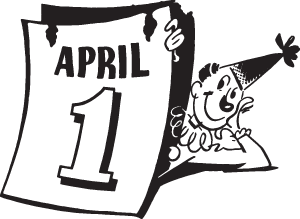It’s April First!
No, The Legal Genealogist hasn’t completely lost her mind.
Not yet, at least…
 This really is a good day for genealogists to celebrate.
This really is a good day for genealogists to celebrate.
At least American genealogists.
And at least those whose folks can be found on the population schedules of the United States Census in 1930 or 1940. Or — for those of us avidly looking forward to 2022 — those whose folks we hope will be found on the population schedule of 1950.
Because April 1 was the census enumeration date in 1930 and 1940 — and continued to be the enumeration date thereafter.1
Everything reported in the census, from 1790 right on through to today, is supposed to be reported as of the enumeration date. In the statute authorizing the first census of 1790, the law itself stated:
That every person whose usual place of abode shall be in any family on the … first Monday in August next, shall be returned as of such family; and the name of every person, who shall be an inhabitant of any district, but without a settled place of residence, shall be inserted in the column of the aforesaid schedule, which is allotted for the heads of families, in that division where he or she shall be on the said first Monday in August next, and every person occasionally absent at the time of the enumeration, as belonging to that place in which he usually resides in the United States.2
And the census takers eventually came to be instructed that everything they were to report on the census form was to be reported as of the enumeration date. So, for example, in 1820, census takers were instructed:
all the questions refer to the day when the enumeration is to commence; the first Monday in August next. Your assistants will thereby understand that they are to insert in their returns all the persons belonging to the family on the first Monday in August, even those who may be deceased at the time when they take the account; and, on the other hand, that they will not include in it, infants born after that day.3
When our folks said they owned a radio in 1930, then, they should have owned one on April 1… but may have sold it by the end of the year. Age, marital status, whether able to read and write — all should have been reported as of April 1.
That can be a valuable clue — the enumeration date helps us narrow things down. Somebody who was recorded as 30 years old on the 1930 census should have been born between April 2, 1899 and April 1, 1900 — and not after April 1, 1900.
So celebrate the day!
It’s a good day for genealogists!
And that’s no joke…
SOURCES
- See Jason G. Gauthier, Measuring America: The Decennial Census from 1790 to 2000 (Washington, D.C. : U.S. Department of Commerce, Economics and Statistics Administration, U.S. Census Bureau, 2002); PDF download, U.S. Census Bureau (http://www.census.gov/ : accessed 31 Mar 2016). ↩
- “An Act providing for the enumeration of the Inhabitants of the United States,” 1 Stat. 103 (1 Mar 1790). ↩
- Gauthier, Measuring America: The Decennial Census from 1790 to 2000, PDF at 5. ↩



My mother’s older brother was born April 1. Her father thought his family playing a trick on him. My mother was born 2 years later on April 1. This time her father was sure his family was playing a trick on him. For my Mom’s family, April 1 was forevermore a special day.
Horray for April 1 & Census Reports that tell us lots of information about our families!
You would think that someone who researches and uses the Census would know that! Well…not ol dummy here. I keep these lil tidbits of info, nice to refresh the old memory now and then. Thanks.